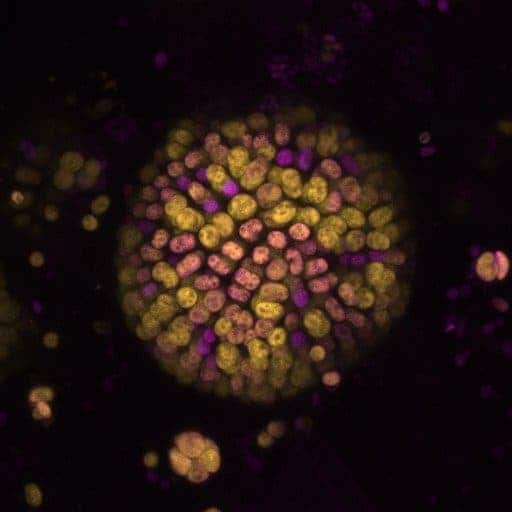For those of you who think that we know it all already, there’s a new surprise. A recent discovery has shaken what know about photosynthesis, an already well-studied topic. The “textbook changer” is that a group of photosynthesizers exists that does not need visible red light. This was thought to be impossible because light below these wavelengths does not contain much energy.
It is very well established that photosynthetic organisms use visible red light for photosynthesis. The green pigment, chlorophyll-a, is used to collect red light and use its energy to make necessary biochemicals and oxygen. Chlorophyll-a is found in pretty much every single photosynthetic organism, so we thought that it sets an energy limit for photosynthesis. This has been termed the “red limit” and was thought to signify the minimum amount of energy required for the process of photosynthesis.
One cyanobacterium, Acaryochloris, that lives in the shade of a green sea squirt that blocks most visible light is known to use near-infrared light. It was considered an exception as it is a single species and lives in an extremely specific habitat. Now, the researchers have discovered that it isn’t just a one-off, but actually a quite common lifestyle for cyanobacteria that live in shaded areas. A few examples are found in bacterial mats in Yellowstone Park and in Australian beach rock.

So how are these cyanobacteria able to survive if they can’t power their chlorophyll-a? It turns out that chlorophyll-a shuts down under these circumstances and lets its sidekick chlorophyll-f take over. Previously, chlorophyll-f was thought to just harvest light, now we know that it takes a starring role under shaded conditions and can use infrared red light to perform photosynthesis below the red limit. Plants that use this photosynthesis type can also protect themselves from varying brightness of light.
“The new form of photosynthesis made us rethink what we thought was possible. It also changes how we understand the key events at the heart of standard photosynthesis. This is textbook changing stuff,” said lead researcher Professor Bill Rutherford, from the Department of Life Sciences at Imperial College London.
Now we know of a third widespread type of photosynthesis. It is only employed in special conditions, in infrared-rich shaded conditions. When there is normal light, standard photosynthesis is still the norm.
So what are the consequences of this discovery? The researchers think that it could help to engineer more efficient crops that can use a wider range of light. Another interesting implication is that is could lower our standard, so to speak, to search for life on other planets. Until now, the red limit is used in astrobiology to determine whether complex life could have evolved in other solar systems.
It’s pretty cool that there are major discoveries to be made on topics that we think that we know well!
Journal reference: Dennis J. Nürnberg et al, Photochemistry beyond the red limit in chlorophyll f–containing photosystems, Science (2018). DOI: 10.1126/science.aar8313


